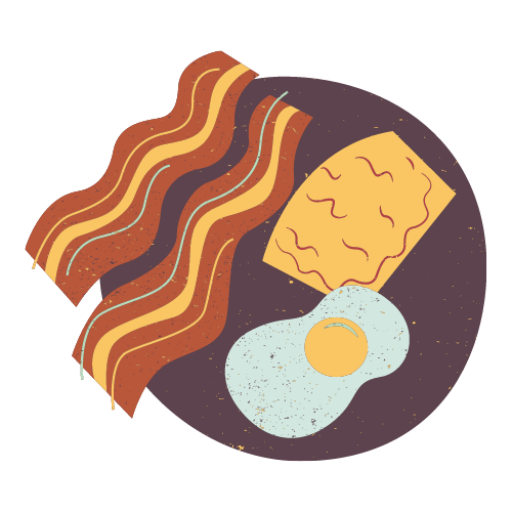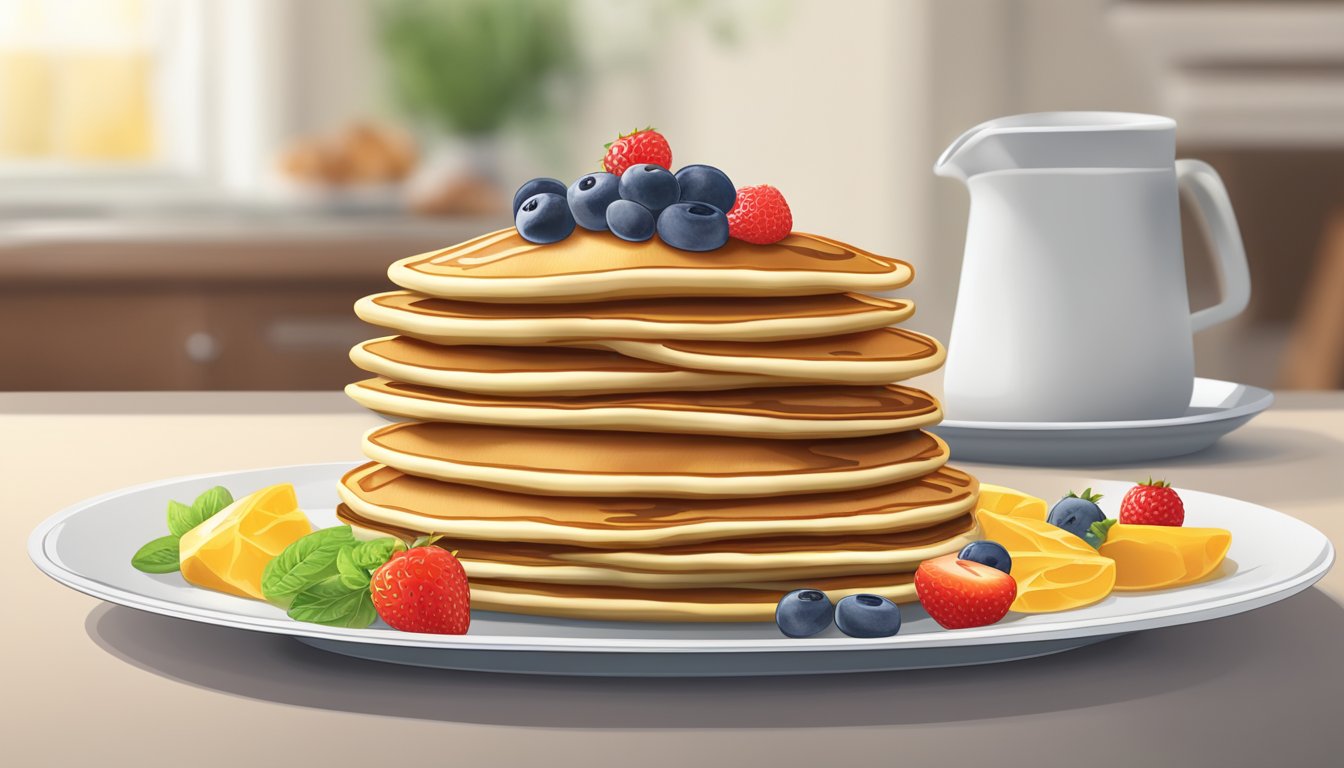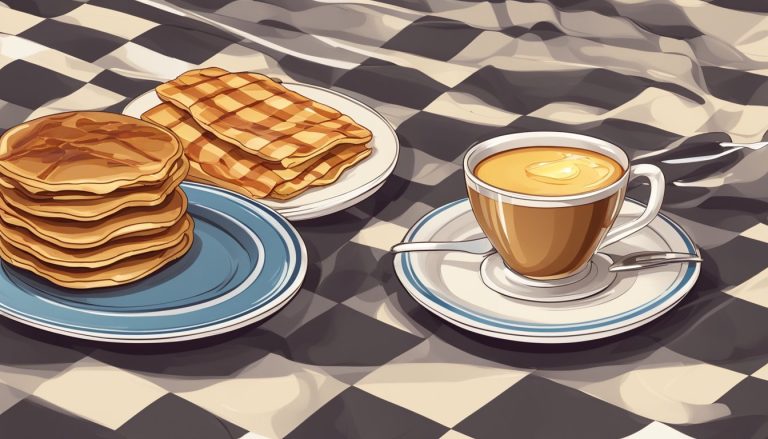Pancakes have delighted taste buds for millennia, with evidence of their consumption dating back over 5,000 years. The humble pancake has evolved from a simple flatbread to a culinary canvas, offering endless possibilities for flavor combinations and presentation styles. One such presentation that captures both the eye and the imagination is the perfectly stacked tower of pancakes.
The key to creating the perfect pancake stack lies in optimizing each pancake’s structural integrity while maintaining a delicate balance between fluffiness and stability. This delicate balance requires an understanding of the science behind pancake batter composition and cooking techniques. Factors such as batter consistency, cooking temperature, and flipping technique all play crucial roles in achieving the ideal pancake for stacking.
Mastering the art of pancake architecture involves more than just cooking skills. It requires an appreciation for the interplay between texture, taste, and visual appeal. By exploring the science behind pancake creation, home cooks and professional chefs alike can elevate their breakfast game and create stunning, Instagram-worthy stacks that are as delicious as they are beautiful.
The Anatomy of the Perfect Pancake

Creating the ideal pancake involves a delicate balance of ingredients and technique. The right combination yields a fluffy, golden disc with a tender interior and crisp edges.
Ingredients for Success
Flour forms the foundation of pancake batter. All-purpose flour is common, but whole wheat or gluten-free alternatives can be used. Eggs bind ingredients and provide structure. Milk or buttermilk adds moisture and flavor. Baking powder is crucial for leavening, creating air bubbles that result in fluffy pancakes. A pinch of salt enhances overall taste. Sugar isn’t essential but can add sweetness and promote browning. Some recipes include melted butter or oil for richness and to prevent sticking.
Consistency and Texture
The ideal pancake batter has a smooth, pourable consistency. It should be thick enough to hold its shape on the griddle but thin enough to spread slightly. Overmixing can lead to tough pancakes, so gentle folding is key. Resting the batter for 5-10 minutes allows flour to absorb liquid and gluten to relax. This results in more tender pancakes. Proper cooking temperature is crucial. A medium-high heat creates a golden exterior while allowing the center to cook through. Bubbles forming on the surface indicate when to flip.
Leavening Mechanics

Leavening agents play a crucial role in creating the perfect pancake texture. These ingredients introduce air bubbles into the batter, resulting in light and fluffy pancakes.
Role of Baking Powder
Baking powder is a key leavening agent in pancake batter. It contains both an acid and a base that react when mixed with liquid ingredients. This reaction produces carbon dioxide gas, which forms tiny bubbles throughout the batter.
As the pancake cooks, these bubbles expand, creating a network of air pockets. This process gives pancakes their characteristic light and airy texture. The amount of baking powder used can significantly impact the final result.
Too little baking powder may lead to dense, flat pancakes. Conversely, too much can cause an overly porous texture or a bitter taste.
Whipping Egg Whites
Whipped egg whites serve as an alternative or complementary leavening method. When beaten, egg whites incorporate air, forming a stable foam structure.
Folding whipped egg whites into pancake batter introduces additional air pockets. This technique can produce exceptionally light and fluffy pancakes with a delicate texture.
The proteins in egg whites help stabilize the air bubbles during cooking. This results in a more even rise and a finer crumb structure in the finished pancakes.
Proper folding technique is crucial to maintain the air bubbles. Over-mixing can deflate the egg whites, reducing their leavening power.
Creating the Stack

Building the perfect pancake stack requires precision and artistry. The key lies in careful portioning, strategic spacing, and thoughtful arrangement to create a visually appealing and structurally sound tower of fluffy goodness.
Portioning and Spacing
Begin by portioning each pancake uniformly. Aim for a diameter of 4-5 inches and a thickness of about 1/4 inch. This size allows for easy stacking and ensures even cooking.
Leave a small gap between each pancake in the stack. This spacing prevents the pancakes from becoming soggy and helps maintain their individual textures. A gap of about 1/8 inch is ideal.
For stability, consider using a slightly larger pancake as the base. This provides a solid foundation for the stack and enhances its overall appearance.
Order and Presentation
Start with the largest, most visually appealing pancake at the bottom of the stack. This creates a stable base and sets the tone for the entire presentation.
Alternate pancake sizes slightly as you build upwards. This variation adds visual interest and helps maintain balance in the stack.
Place any imperfect pancakes in the middle of the stack, sandwiched between more attractive ones. This technique hides flaws and ensures a polished look.
For a classic appearance, aim for a stack of 3-5 pancakes. This height is visually pleasing and allows for easy eating without overwhelming the plate.
Tools of the Trade

Creating the perfect pancake stack requires skill and the right equipment. A high-quality spatula and proper flipping technique are essential for achieving optimal results.
Choosing the Right Spatula
Selecting an appropriate spatula is crucial for pancake success. Look for a wide, thin, and flexible spatula made of heat-resistant materials like silicone or metal. A spatula with a beveled edge helps slide under pancakes easily.
Size matters – aim for a spatula that can support the entire pancake. For standard pancakes, a 4-5 inch wide spatula works well. Longer handles provide better control and keep hands away from heat.
Consider grip comfort, especially for extended cooking sessions. Ergonomic handles reduce fatigue. Some spatulas feature perforations to drain excess oil or butter.
The Art of Flipping
Mastering the flip is key to perfectly cooked pancakes. Timing is critical – wait for bubbles to form on the surface and edges to set before flipping. This usually takes 2-3 minutes on medium heat.
Slide the spatula completely under the pancake in one smooth motion. Lift and flip in a quick, confident movement. Avoid pressing down after flipping, as this can deflate the pancake.
Practice makes perfect. Start with smaller pancakes to build confidence. For larger pancakes, use two spatulas for added support during flipping.
Flipping height affects texture. A higher flip allows more air circulation, resulting in fluffier pancakes. Lower flips produce denser results.
Finishing Touches
The final components added to a pancake stack can elevate it from good to extraordinary. These elements contribute essential flavors and textures that complement the pancakes themselves.
Types of Syrup
Maple syrup reigns supreme in the world of pancake toppings. Its rich, sweet flavor pairs perfectly with the subtle taste of pancakes. Pure maple syrup, graded by color and flavor intensity, offers options from delicate golden to robust dark varieties.
Alternatives to maple syrup include:
- Honey
- Agave nectar
- Fruit syrups (strawberry, blueberry, raspberry)
- Chocolate syrup
Each type of syrup brings its own unique flavor profile to the pancake stack. Some people prefer to warm their syrup before pouring, enhancing its ability to spread evenly across the pancakes.
Butter and Its Substitutes
A pat of butter melting atop a warm stack of pancakes is a classic finishing touch. Butter adds richness and helps distribute syrup more evenly. For best results, use softened butter that spreads easily without tearing the pancakes.
Butter alternatives include:
- Margarine
- Nut butters (peanut, almond, cashew)
- Coconut oil
- Fruit compotes
These options cater to different dietary preferences and can introduce new flavors to the pancake experience.
Toppings and Variations
Toppings add texture, flavor, and visual appeal to pancake stacks. Fresh fruits like sliced bananas, strawberries, or blueberries are popular choices. Whipped cream provides a light, airy contrast to the dense pancakes.
Other topping ideas:
- Chopped nuts (walnuts, pecans, almonds)
- Chocolate chips
- Nutella
- Powdered sugar
- Cinnamon sugar
Creative combinations of toppings can transform a simple pancake stack into a gourmet breakfast experience. Some people enjoy savory toppings like bacon or cheese for a unique twist on the classic sweet pancake.
Taste Experience

The science of pancake architecture extends beyond appearance to encompass flavor profiles and complementary toppings. A well-crafted stack engages multiple taste sensations and creates a harmonious eating experience.
Balancing Flavors
Pancake batters offer a canvas for flavor combinations that excite taste buds. Sweet and savory elements can be incorporated to create depth. Sugar in the batter activates sweetness receptors, while salt enhances overall taste perception. Vanilla extract adds aromatic complexity.
Ingredients like buttermilk or yogurt introduce tanginess, balancing sweetness. Spices such as cinnamon or nutmeg provide warmth and dimension. For savory variations, herbs like chives or black pepper can be mixed into the batter.
Texture also influences flavor perception. Fluffy pancakes allow flavors to distribute evenly across the palate. Crisp edges from proper cooking techniques add contrast and amplify taste sensations.
Pancake and Syrup Pairings
Toppings and syrups play a crucial role in the pancake taste experience. Classic maple syrup offers a rich sweetness that complements the subtle flavors of plain pancakes. Its viscosity coats the tongue, prolonging flavor delivery.
Fruit compotes provide bursts of acidity and natural sweetness. Berry sauces activate different taste receptors than maple syrup, creating a more complex flavor profile. Chocolate or caramel sauces appeal to those seeking indulgence.
Savory pancakes benefit from complementary spreads or sauces. Herb butter melts into warm pancakes, distributing flavor. Hollandaise sauce adds richness to savory stacks. Bacon or cheese toppings introduce umami notes, rounding out the taste experience.
Advanced Pancake Science
Pancake architecture involves intricate scientific principles. The perfect stack requires a delicate balance of structural integrity and culinary artistry.
Temperature control plays a crucial role in achieving optimal results. Maintaining a consistent griddle temperature between 350-375°F (175-190°C) ensures even cooking and proper texture development.
Batter viscosity affects pancake shape and thickness. A slightly thick batter with small lumps produces fluffy pancakes, while a thinner batter creates flatter, more uniform discs.
Leavening agents like baking powder or baking soda are essential for creating air pockets within the batter. These tiny bubbles expand during cooking, resulting in light and airy pancakes.
The Maillard reaction, a chemical process between amino acids and reducing sugars, is responsible for the golden-brown color and delicious flavor of pancakes. This reaction occurs optimally at temperatures above 300°F (150°C).
Stacking techniques can impact pancake quality. Allowing brief cooling between layers prevents condensation and maintains crispness. A slight offset in alignment can improve stability.
Key factors for perfect pancake stacks:
- Consistent batter composition
- Proper cooking temperature
- Adequate resting time between flips
- Careful stacking technique
- Optimal serving temperature
By applying these scientific principles, pancake enthusiasts can create impressive, structurally sound stacks that are both visually appealing and delicious.




